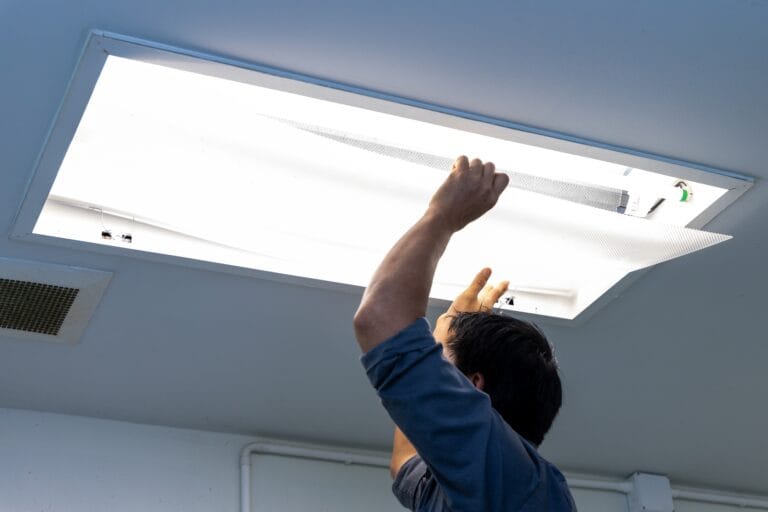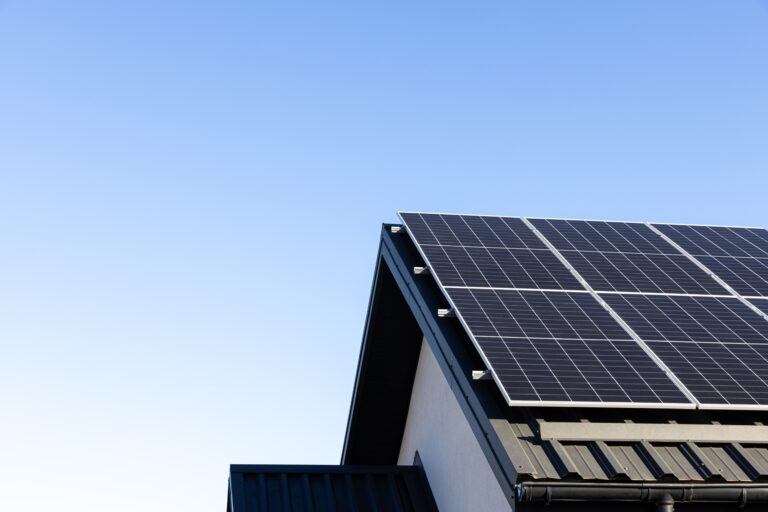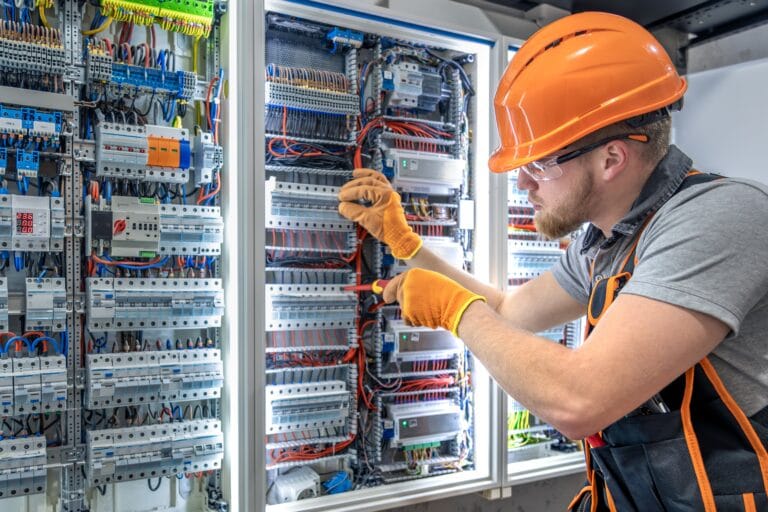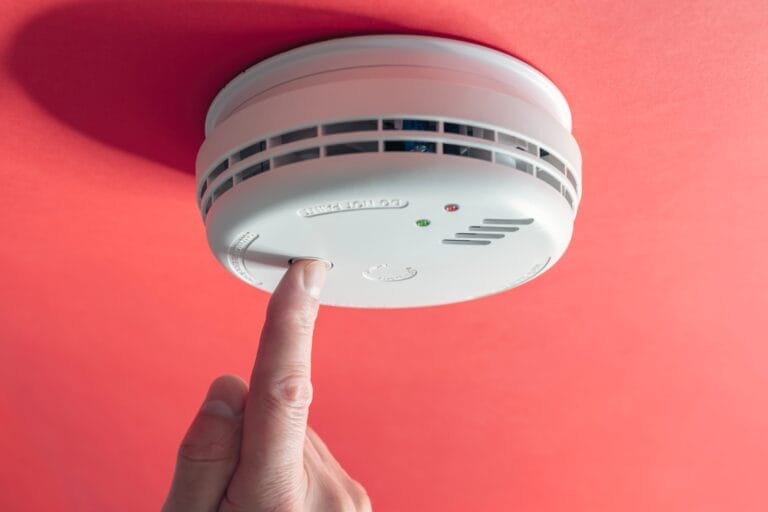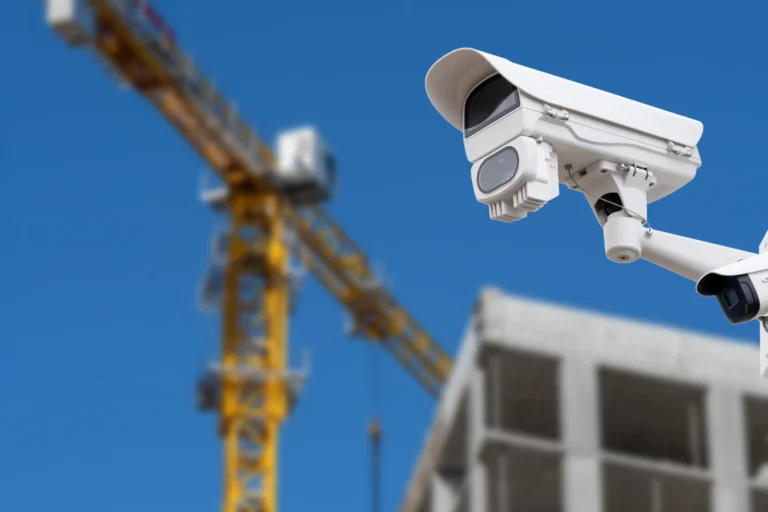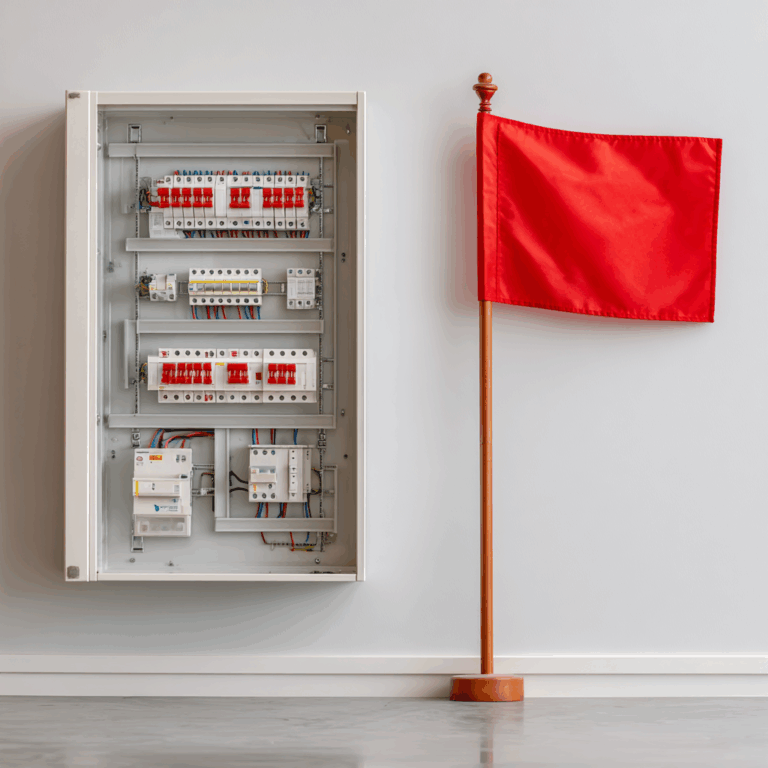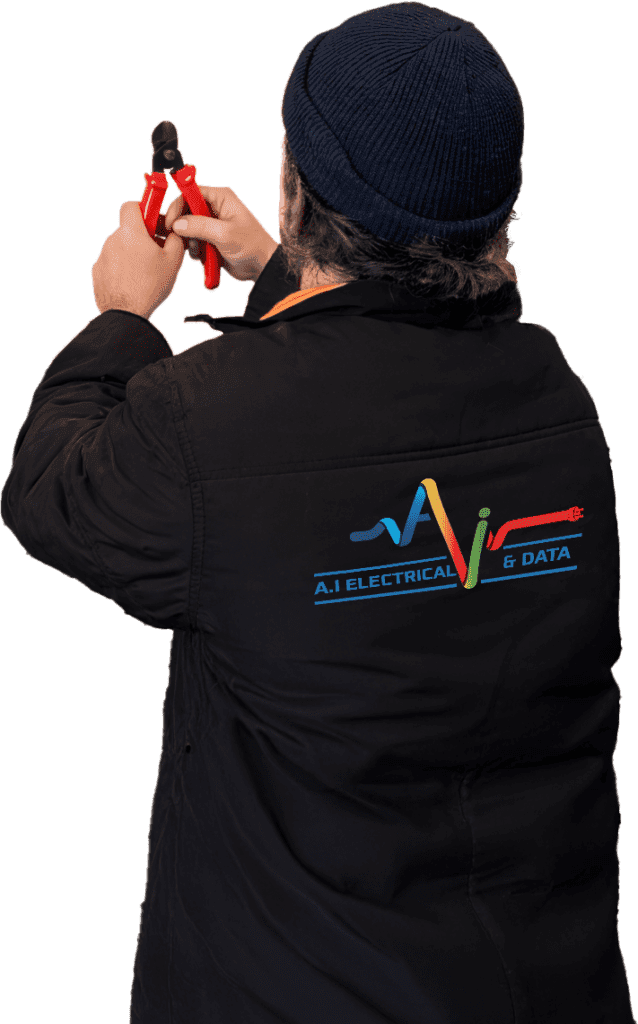Understanding RCD Trips with Household Appliances
You’re loading the washing machine for a quick cycle or preheating your oven for dinner when suddenly—click—the power cuts out. Your RCD has tripped again. This frustrating scenario plays out in countless homes, leaving you standing in the dark wondering what went wrong.
What is an RCD?
An RCD (Residual Current Device) is a life-saving safety switch installed in your electrical panel. It constantly monitors the flow of electricity through your circuits, comparing the current traveling through the live wire against what returns through the neutral wire. When it detects even a tiny imbalance—typically as little as 30 milliamps—it trips instantly, cutting power to prevent electric shock or fire.
Why Does My RCD Trip When I Use Certain Appliances?
The moment you switch on your washing machine or oven, these power-hungry appliances draw significant current. If there’s any fault causing electricity to leak to earth, your RCD responds immediately. You might dismiss it as a minor inconvenience, but repeated RCD trips signal a genuine electrical safety concern that demands your attention.
The Importance of Understanding RCD Trips
Understanding why your RCD trips when you run the washing machine or oven isn’t just about restoring power—it’s about protecting your family from electrical hazards. The root cause could range from simple overloading to dangerous wiring faults. Identifying and fixing these issues ensures your home remains safe while keeping your essential appliances running smoothly.
When to Seek Professional Help
If you find yourself frequently experiencing RCD trips, it may be time to consult with a professional residential electrician. They can help identify and rectify any underlying issues with your electrical system, ensuring the safety of your home and family.
It’s also worth noting that similar issues can arise in commercial settings, especially with solar systems that don’t meet Australian standards. Recent data shows that 1 in 5 commercial solar systems fail compliance checks, which can lead to significant financial losses for businesses. Therefore, whether it’s residential or commercial electrical systems, understanding and addressing these safety concerns is crucial. If you need assistance, don’t hesitate to contact us for expert help.
How Does an RCD Work?
Your Residual Current Device operates on a remarkably simple yet effective principle. At its core, the device continuously monitors the electrical current flowing through your home’s circuits, specifically comparing the current in the live wire against the current in the neutral wire.
The Monitoring Mechanism
Inside every RCD sits a sensitive electromagnetic coil that wraps around both the live and neutral conductors. Under normal operating conditions, the current flowing through the live wire to your washing machine or oven should equal the current returning through the neutral wire. The RCD measures this balance with precision—typically down to 30 milliamps (0.03 amps) in domestic installations.
When these currents match perfectly, the electromagnetic fields they create cancel each other out. The RCD remains in its “on” position, allowing electricity to flow freely to your appliances. You can run your washing machine through its entire cycle without any interruption.
What Triggers the Trip
The moment current leakage occurs, the delicate balance breaks. If even a small amount of electricity—as little as 30 milliamps—finds an alternative path to earth (perhaps through damaged insulation or moisture), the current returning through the neutral wire becomes less than what left through the live wire.
This imbalance creates a net electromagnetic field in the RCD’s coil. The device detects this difference instantly, triggering a spring-loaded switch mechanism that cuts power to the circuit in less than 40 milliseconds. This split-second response is what makes electrical circuit protection so effective at preventing electric shocks and potential fires.
The sensitivity of modern RCDs means they’ll trip even when the leakage current poses no immediate danger to you. A 30mA trip threshold sits well below the level that could cause harm to humans, which explains why your RCD might trip from seemingly minor faults in your appliances.
Common Causes of RCD Trips with Washing Machines and Ovens
When you press start on your washing machine or preheat your oven, you’re asking your electrical system to deliver a significant amount of power. Understanding the specific RCD tripping causes helps you identify and resolve these frustrating interruptions to your daily routine.
1. Overloaded Circuits
Your washing machine typically draws between 1,800 and 2,500 watts during operation, while your oven can demand anywhere from 2,000 to 5,000 watts depending on the model and settings. When you run these appliances simultaneously with other devices on the same circuit, you’re pushing your electrical system to its limits.
Circuit load capacity isn’t infinite. Most household circuits are rated for either 15 or 20 amps at 240 volts. Here’s what happens when you exceed these limits:
You might notice this pattern if your RCD trips specifically when you:
The RCD isn’t malfunctioning when it trips under these conditions—it’s doing exactly what it’s designed to do. Washing machine electrical faults and oven electrical faults often manifest as increased current draw that pushes your circuit beyond safe operating parameters.
Overloaded electrical circuit conditions create heat buildup in your wiring. Your RCD interprets this abnormal electrical behavior as a potential earth leakage scenario, even though the root cause is simply too much demand on a single circuit. The device can’t distinguish between dangerous earth faults and excessive load conditions, so it errs on the side of caution by cutting power.
You can verify if overloading is your issue by running each appliance individually. If your washing machine operates without tripping when used alone, but trips when you’re cooking dinner simultaneously, you’ve identified an overloaded circuit as the culprit.
2. Moisture Ingress in Electrical Components
Water and electricity create a dangerous combination that frequently triggers RCD tripping causes in your home. When moisture penetrates appliance wiring or internal components, it creates an unintended pathway for electrical current to flow to earth. This leakage current due to moisture is precisely what your RCD is designed to detect, causing it to trip and cut power immediately.
Common sources of moisture in wiring include:
- Washing machine leaks – Worn door seals, damaged hoses, or faulty pump connections allow water to seep into the machine’s electrical compartment
- Condensation buildup – Steam from cooking or washing cycles accumulates inside appliance housings, particularly in poorly ventilated spaces
- Plumbing leaks – Dripping pipes behind or beneath appliances gradually saturate electrical connections
- Flood damage – Even minor flooding can introduce moisture into junction boxes and cable insulation
- High humidity environments – Laundry rooms and kitchens naturally create moisture-rich atmospheres that penetrate electrical components over time
You’ll often notice washing machine electrical faults or oven electrical faults manifest as intermittent tripping patterns. The RCD might trip during certain wash cycles when water splashes near electrical connections, or when your oven’s self-cleaning cycle generates excessive steam. Water damage electrical faults don’t always present immediately – moisture can accumulate gradually until earth leakage reaches the threshold that triggers your RCD’s protective response.
3. Damaged or Faulty Wiring
Your home’s electrical wiring is crucial for the entire electrical system to function properly. When it gets damaged or worn out, it’s likely that the RCD (Residual Current Device) will trip frequently. This is especially true for older homes where the insulation on wires has deteriorated over many years.
How Wire Wear and Tear Affects Your RCD
There are several ways in which worn-out wiring can directly impact the performance of your RCD:
How the RCD Detects Damaged Wiring
The RCD is designed to detect these damaged wiring scenarios because they create an imbalance between the live and neutral currents. For example, when insulation fails on your washing machine or oven circuit, even a tiny amount of current—as little as 30 milliamps—leaks to earth through the damaged section. This imbalance registers instantly on your RCD, which interprets it as a potential electrocution risk and trips to protect you.
The Impact of Faulty Electrical Installation
In addition to worn-out wiring, faulty electrical installation can also worsen these problems. Here are some common issues caused by improper installation:
- Poorly installed connections loosen over time, creating arcing and heat that accelerates wire degradation.
- Junction boxes with inadequate strain relief allow wires to flex and fracture.
- Incorrectly sized cables for high-power appliances overheat and fail prematurely.
These installation mistakes can further compromise the integrity of your electrical system and increase the likelihood of RCD tripping.
4. Earth Leakage from Appliance Faults
Internal appliance electrical faults are one of the most common reasons why RCD trips when you use your washing machine or oven. These earth leakage faults happen when electrical current takes an unintended route to ground through the metal casing or internal parts of the appliance.
Insulation breakdown occurs when the protective covering around electrical wires inside your appliance deteriorates over time. Factors such as heat, moisture, and mechanical stress gradually wear down this insulation, allowing current to escape to earth. You’ll often see this in washing machines where heating elements develop tiny cracks, or in ovens where high temperatures damage wire insulation near heating coils.
Component failures create direct pathways for current leakage:
The RCD detects these washing machine electrical faults and oven electrical faults instantly. Even a small leakage current of 30 milliamps triggers the protective mechanism. You might notice the RCD trips immediately when you start a wash cycle or turn on your oven’s heating function—this indicates an appliance electrical fault as the cause of your circuit protection problems.
5. Aging or Defective Appliances
Your washing machine or oven doesn’t last forever. As appliances age, their internal components deteriorate, making them increasingly susceptible to earth leakage and other washing machine electrical faults or oven electrical faults. The insulation around wiring degrades over time, heating elements develop microscopic cracks, and motor windings break down—all of which create pathways for current to escape to earth.
Appliances that have served you well for 10-15 years are particularly vulnerable. The constant heating and cooling cycles in ovens cause expansion and contraction that weakens connections. Washing machines face similar stress from vibration, water exposure, and temperature fluctuations during each cycle. These conditions accelerate wear on electrical components, transforming a once-reliable appliance into a source of RCD tripping causes.
Watch for these warning signs that your faulty washing machine or defective oven is the culprit:
These appliance maintenance issues indicate internal deterioration that’s causing current to leak to earth, triggering your RCD’s protective response.
Troubleshooting Frequent RCD Tripping Issues with Your Appliances
When your RCD trips repeatedly, you need a systematic approach to identify the culprit. Start by unplugging your washing machine or oven and resetting the RCD. If it stays on, you’ve confirmed the appliance is causing the problem.
However, it’s essential to understand that not all RCD tripping incidents are caused by faulty appliances. Sometimes, it could be a sign of a more serious electrical issue. For instance, there are instances when your circuit breaker keeps tripping and it’s actually dangerous. Therefore, always exercise caution and consider consulting a professional if you’re unsure.
Test the appliance in isolation
Plug it into a different circuit or socket, preferably one protected by a different RCD. If the new RCD trips, the fault lies within the appliance itself. If it doesn’t trip, you’re dealing with a circuit or wiring issue.
Check for visible damage
Inspect the power cable and plug of your appliance for any signs of wear or damage:
Run specific tests on your appliances
For washing machines, run a short cycle without any load. If it trips during the heating phase, the heating element likely has an earth fault. For ovens, test each function separately—grill, fan, and conventional heating—to pinpoint which component is faulty.
Inspect for moisture or water damage
Check the exterior of your appliances for any signs of moisture or water damage, especially around the base of washing machines and the back panel of ovens. Water ingress can create paths for current leakage that trigger RCD protection.
Verify RCD functionality with a tester
Use a plug-in RCD tester (available at most hardware stores for under £20) to confirm that your RCD is working properly and not overly sensitive. A faulty RCD might trip at lower leakage currents than its rated threshold.
Test other devices on the same circuit
If you’ve ruled out the appliance as the source of the problem, it’s time to investigate other devices connected to that circuit. Start by disconnecting everything from the circuit and resetting the RCD. Then, reconnect each item one at a time while monitoring whether the RCD trips. This process will help you determine if multiple appliances are collectively causing nuisance tripping through accumulated leakage current.
When to Seek Professional Help for Persistent RCD Tripping Problems
You’ve worked through the troubleshooting steps, but your RCD keeps tripping every time you run the washing machine or oven. This is your signal to call in a professional electrician help rather than continuing to reset the switch repeatedly.
You need an electrical inspection service immediately if:
Electrical faults aren’t DIY territory. A qualified electrician has specialized testing equipment—like insulation resistance testers and earth loop impedance meters—that can pinpoint exactly where current is leaking. They’ll conduct a thorough circuit analysis, test your RCD’s sensitivity, and inspect your appliance connections for hidden faults you can’t see.
In some cases, switchboard upgrades may be necessary to resolve ongoing issues. Why your RCD trips when you run the washing machine (or oven) – and how to fix it often requires professional diagnosis when basic troubleshooting fails. Persistent tripping indicates a serious underlying issue that could escalate into fire hazards or complete electrical failure. You’re not just paying for a repair—you’re investing in your family’s safety and preventing potentially catastrophic electrical incidents.
Preventative Measures to Minimize Future RCD Trips with Household Appliances
Protecting your home from recurring RCD trips requires consistent attention to both your appliances and electrical system. These electrical maintenance tips will help you maintain a safer, more reliable home environment.
Regular Appliance Inspections
You should examine your washing machine and oven every few months for visible signs of wear. Check power cords for fraying, cracks, or exposed wiring. Look around the base of your washing machine for water pooling or moisture buildup, which can lead to earth leakage. Inspect oven seals and door hinges to ensure they’re intact and functioning properly.
Proper Installation and Positioning
Keep your appliances away from water sources whenever possible. Your washing machine should sit on a level surface with proper drainage, preventing water from accumulating near electrical connections. Ensure adequate ventilation around your oven to prevent heat buildup that can damage wiring insulation over time.
Scheduled Professional Maintenance
Book annual electrical safety inspections with a qualified electrician. They’ll test your RCD functionality, check circuit loading, and identify potential issues before they cause trips. This appliance care for safety approach catches problems early when they’re easier and cheaper to fix.
Smart Usage Habits
Avoid running multiple high-power appliances simultaneously on the same circuit. Stagger your washing machine cycles and oven use during peak cooking times. This simple practice reduces circuit stress and minimizes the risk of preventing nuisance trips.
Moisture Management
Address any plumbing leaks immediately. Use dehumidifiers in damp areas where appliances are located. Wipe down your washing machine door seals regularly to prevent mold and moisture accumulation that can compromise electrical components.
Appliance Replacement Planning
Track your appliance ages and plan replacements before they become safety hazards. Most washing machines and ovens have a lifespan of 10-15 years. Replacing aging appliances proactively prevents the frustration of unexpected RCD trips and potential electrical hazards.
FAQs (Frequently Asked Questions)
What is an RCD and why does it trip when using household appliances like washing machines or ovens?
An RCD (Residual Current Device) is a safety device that monitors the electrical current balance between live and neutral wires. It trips to cut off power when it detects leakage currents to earth, which can happen due to faults in appliances like washing machines or ovens, protecting you from electric shocks.
How does an RCD work to protect my home from electrical faults?
An RCD continuously compares the current flowing through the live and neutral wires. If it detects an imbalance caused by current leaking to earth—often due to damaged wiring or appliance faults—it quickly trips to prevent potential electric shocks or fire hazards.
What are common causes of RCD trips when running washing machines or ovens?
Common causes include overloaded circuits from running multiple high-power appliances simultaneously, moisture ingress causing leakage currents, damaged or faulty wiring, earth leakage due to internal appliance faults, and aging or defective appliances prone to electrical failures.
How can I troubleshoot frequent RCD tripping issues with my washing machine or oven?
Start by checking if multiple high-power devices are on the same circuit and reduce load if needed. Inspect for signs of moisture ingress or damaged wiring. If the problem persists, isolate appliances one at a time to identify faults. For persistent issues, seek professional electrical inspection and repairs.
When should I call a professional electrician for persistent RCD tripping problems?
If your RCD trips frequently despite basic troubleshooting—such as reducing circuit load and inspecting appliances—or if you suspect damaged wiring, moisture damage, or internal appliance faults, it’s important to contact a qualified electrician for thorough inspection and safe repairs.
What preventative measures can I take to minimize future RCD trips with household appliances?
Regularly maintain and service your appliances to detect early faults, avoid overloading circuits by distributing high-power devices across different circuits, ensure proper electrical installation and wiring condition, keep appliance areas dry to prevent moisture ingress, and promptly repair any detected electrical issues.


